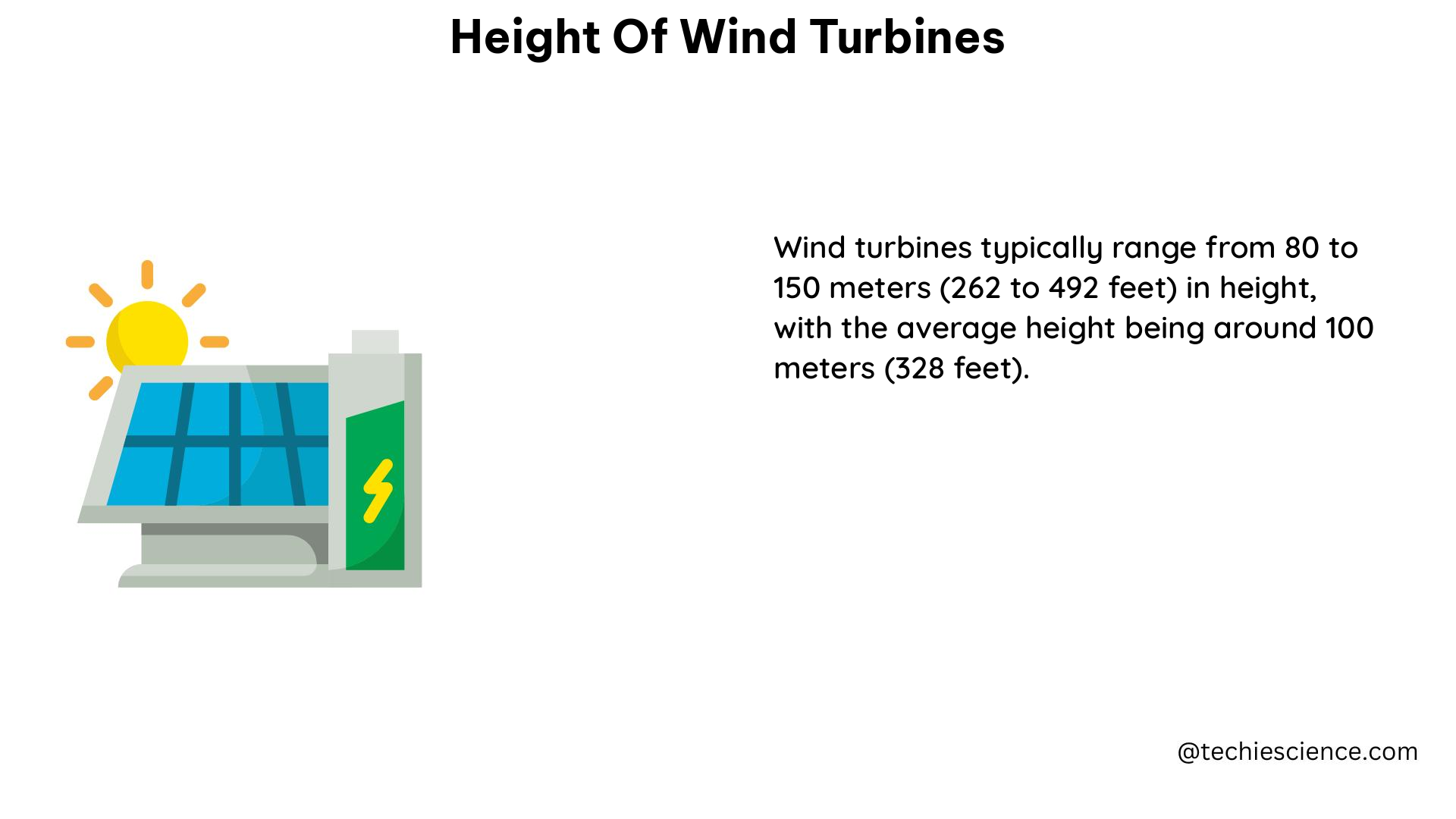The height of wind turbines is a crucial factor in determining their efficiency and power generation capabilities. As the wind industry continues to evolve, the average height of wind turbines has been steadily increasing, with some of the tallest reaching unprecedented levels. This comprehensive guide delves into the intricacies of wind turbine heights, providing a wealth of technical details and quantifiable data to help you understand the latest advancements in this field.
Trends in Wind Turbine Height
Over the past few decades, the average hub height of wind turbines has been on the rise. According to the National Renewable Energy Laboratory (NREL), the average hub height of wind turbines in the United States has increased from around 50 meters in the 1980s to over 80 meters today. This trend is not limited to the US, as the Global Wind Energy Council (GWEC) reports that the average hub height of newly installed wind turbines worldwide has increased from 65 meters in 2000 to 90 meters in 2019.
This increase in height is driven by several factors, including:
- Access to Higher Wind Speeds: Taller turbines can reach higher altitudes where wind speeds are generally stronger and more consistent, leading to increased energy production.
- Reduced Turbulence Effects: Elevated hub heights help minimize the impact of turbulence, which can significantly reduce the efficiency of wind turbines.
- Technological Advancements: Improvements in materials, design, and manufacturing processes have enabled the construction of taller and more powerful wind turbines.
Specific Examples of Tall Wind Turbines

While the average height of wind turbines has been increasing, some models stand out as true giants in the industry. Here are a few examples of the tallest wind turbines in the world:
- Vestas V164-8.0 MW: This turbine has a hub height of 105 meters and a rotor diameter of 164 meters, allowing it to generate up to 8 MW of power.
- Siemens Gamesa SG 14-222 DD: With a hub height of 115 meters and a rotor diameter of 222 meters, this turbine is one of the largest in the world in terms of rotor size.
- GE Haliade-X: Boasting a height of 260 meters and a rotor diameter of 220 meters, the Haliade-X is capable of generating up to 12 MW of power, making it one of the most powerful wind turbines currently available.
Factors Influencing Optimal Wind Turbine Height
Determining the optimal height for a wind turbine is a complex process that involves considering a variety of factors. According to NREL, the key factors that influence the optimal height include:
- Wind Speed: Taller turbines can access higher wind speeds, which can significantly increase energy production.
- Air Density: The density of the air at different altitudes can affect the power output of the turbine.
- Blade Size: Larger blades can capture more wind energy, but they also require taller towers to support them.
- Power Output: The desired power output of the turbine is a crucial factor in determining the optimal height.
To calculate the optimal height for a wind turbine, engineers often use formulas such as the power law formula, which relates the wind speed at different heights. However, it’s important to note that other constraints, such as tower height, foundation strength, grid connection, and environmental impact, can also affect the optimal height for a specific project.
Technological Advancements in Wind Turbine Height
The continuous evolution of wind turbine technology has enabled the construction of taller and more powerful models. Some of the key advancements that have contributed to the increasing height of wind turbines include:
- Improved Materials: The use of lightweight, high-strength materials, such as carbon fiber and advanced steel alloys, has allowed for the construction of taller towers and larger blades.
- Advanced Design Techniques: Computational fluid dynamics (CFD) simulations and other advanced modeling tools have helped optimize the aerodynamic design of wind turbines, enabling taller and more efficient structures.
- Innovative Manufacturing Processes: Advancements in manufacturing techniques, such as modular construction and on-site assembly, have made it easier to build and install taller wind turbines.
- Increased Automation: The integration of robotics and automation in the wind turbine manufacturing and installation processes has improved efficiency and reduced the challenges associated with constructing taller structures.
Conclusion
The height of wind turbines is a critical factor in determining their energy production capabilities and overall efficiency. As the wind industry continues to evolve, the average height of wind turbines has been steadily increasing, with some models reaching unprecedented levels. By understanding the trends, specific examples, and the factors that influence optimal height, wind energy professionals can make informed decisions and drive the development of even taller and more powerful wind turbines in the future.
References:
- NREL. (n.d.). Wind Data and Tools. Retrieved from https://www.nrel.gov/wind/data-tools.html
- Peterson, R. (2023, October 10). How can you determine the optimal height for a wind turbine? LinkedIn. Retrieved from https://www.linkedin.com/advice/1/how-can-you-determine-optimal-height-wind-turbine
- GWEC. (2020). Global Wind Report 2019. Retrieved from https://gwec.net/global-wind-report-2019/
- Vestas. (n.d.). V164-8.0 MW. Retrieved from https://www.vestas.com/en/products/turbine/v164-80
- Siemens Gamesa. (n.d.). SG 14-222 DD. Retrieved from https://www.siemensgamesa.com/en-int/products/onshore/sg-14-222-dd
- GE Renewable Energy. (n.d.). Haliade-X. Retrieved from https://www.ge.com/renewableenergy/wind-energy/offshore-wind/haliade-x

The lambdageeks.com Core SME Team is a group of experienced subject matter experts from diverse scientific and technical fields including Physics, Chemistry, Technology,Electronics & Electrical Engineering, Automotive, Mechanical Engineering. Our team collaborates to create high-quality, well-researched articles on a wide range of science and technology topics for the lambdageeks.com website.
All Our Senior SME are having more than 7 Years of experience in the respective fields . They are either Working Industry Professionals or assocaited With different Universities. Refer Our Authors Page to get to know About our Core SMEs.